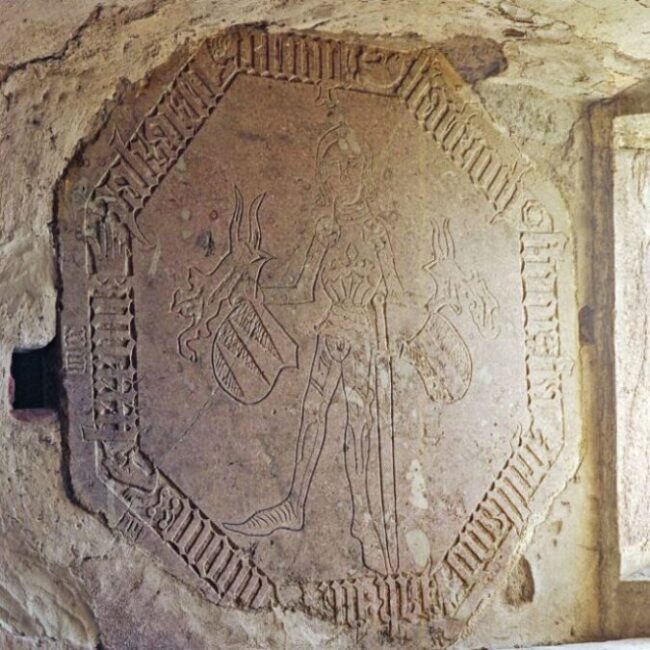The history of the castle
On 2 May 1499, the foundation stone of an imposing new building, Glimmingehus, was laid on the flatlands of Österlen. The man who commissioned the building was a Danish knight, Jens Holgersen Ufstand, at the time one of the most powerful men in Denmark.
The son of squire Holger Hindriksen, it is likely he was born in the 1450s on the Glimminge estate. Ufstand held high-status posts from the beginning of his career. In the 1480s, he was sheriff of nearby royal fortress of Gladsax and in 1486 he was promoted to the same position at the fortress of Lindholmen on the shore of Lake Börringe, in one of the most important counties in Scania.
Greater tasks awaited when in 1487 King John granted him the fiefdom of the Baltic island of Gotland.The Danish nobleman saw this as an excellent opportunity to enrich himself, which he duly did through extensive privateering, primarily targeting Swedish and Hanseatic ships. Ufstand also appears to have lined his coffers when, in 1498, he married the Swedish noblewoman Margareta Arvidsdotter Trolle, daughter of the richest private citizen in Scandinavia, Arvid Trolle. This type of marriage was typical among nobles who supported the Union, who thus created alliances that spanned the Danish-Swedish border.

The Battle Plaque in the Lady’s chamber. Perhaps the knight represents Jens. Photo: Bengt A Lundberg, CC BY
The following year, Ufstand commissioned a lavish new home on the family estate, Glimminge. This solid stone structure was to serve multiple functions; in addition to being well-fortified, it would have luxurious living accommodation, a great hall for entertaining and kitchens all under one roof. It boasted amenities such as airborne heating system and toilets, as well as an ingenious system of defences including embrasures, portcullises and murder holes. The interior of the castle was designed by master builder and stonemason Adam van Düren, who carved the distinctive statue known as The Wild Man. Great Glimminge, as Ufstand called the castle in a letter, certainly lived up to its name.
Ufstand died of old age in 1523 and was buried in the church in Vallby close to Glimmingehus, alongside his wife Margareta who had died the previous year. This proved to be the end of Glimmingehus’ golden age, as heir Börge Jensen Ulfstand never achieved the same position of power as his father.
During the sixteenth century, through marriage the estate was acquired by the Rosencrantz family, where it remained for over 170 years. With new times came new ideals for living and, by the late-sixteenth or early seventeenth century, the residents had abandoned the stone house for a new home in the castle grounds.
Glimmingehus was however still regarded as one of Skåne’s strongest fortifications. Indeed, during the Scanian War in the 1670s, the Swedish crown was so concerned that the house would fall into Danish hands that King Charles XI ordered its demolition; however, the two-metre-thick walls proved too much for the men sent to execute his order and the house was allowed to remain standing.
Some time during the eighteenth century, the castle was repurposed as a grain store, a function that required few alterations thus contributing to the preservation of many original features. In the nineteenth century, academics began to take an interest in the impressive, well-preserved castle and what it could tell them about late-medieval Skåne.
In response to this attention, Lady Adéle Rosencrantz, who owned the property in the late nineteenth century, conducted the first tours of Glimmingehus. However, during her occupancy, the other buildings fell into serious disrepair. Thanks to donations, in the 1920s the castle was bought for the nation and renovated, beginning its journey to becoming a well-known tourist attraction.

